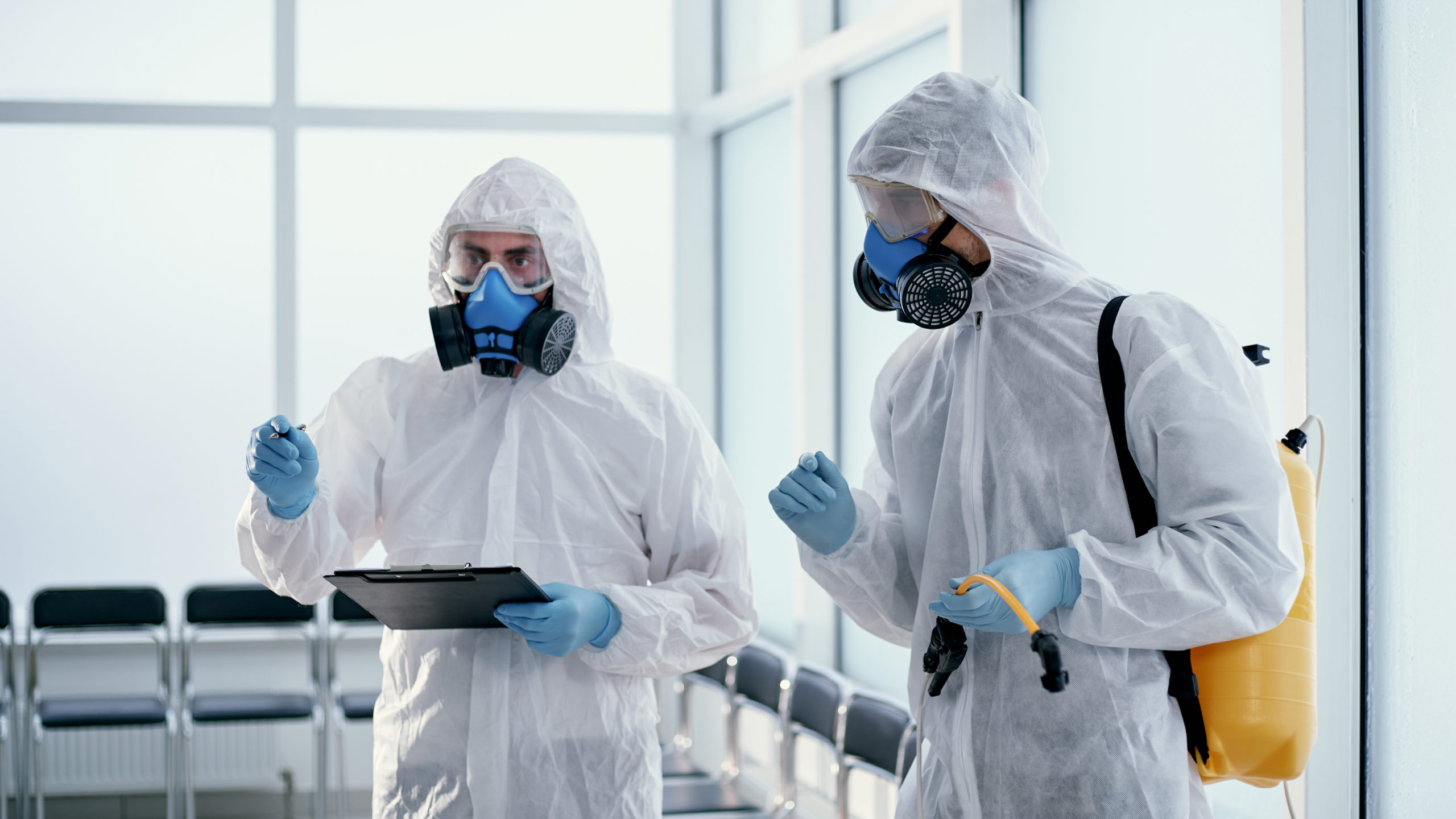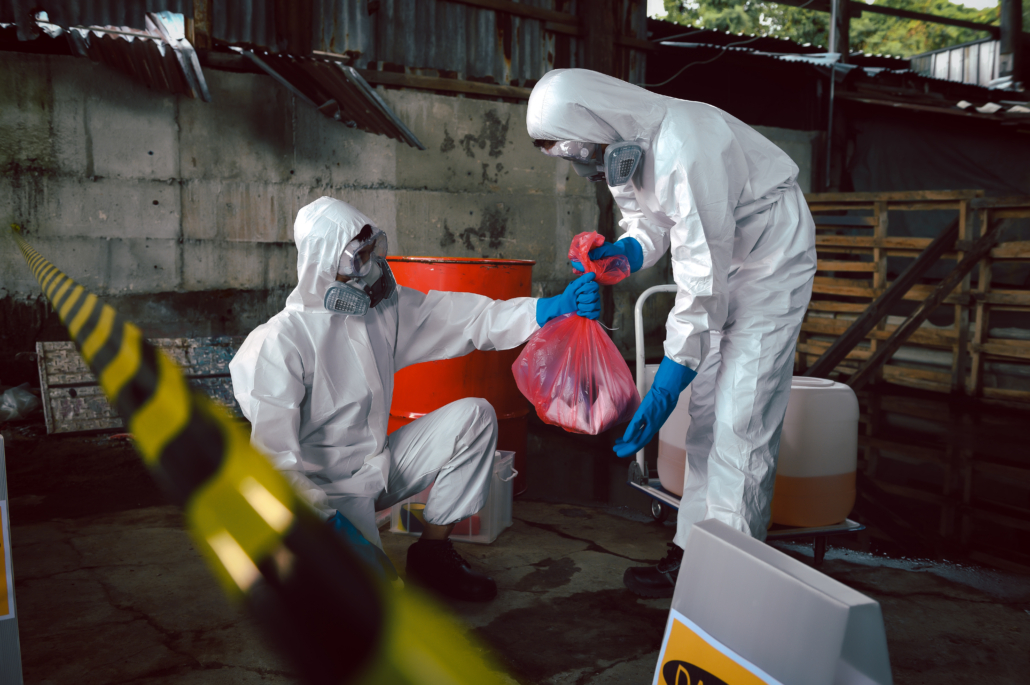Hoarder Cleanup Services: Improving Order and Safety And Security in your house
Hoarder Cleanup Services: Improving Order and Safety And Security in your house
Blog Article
Professional Biohazard Cleaning and Decontamination for Blood, Bodily Fluids, and Hazardous Materials
In the realm of biohazard cleaning and decontamination for blood, physical fluids, and dangerous materials, precision and know-how are vital. The prospective health dangers related to exposure to biohazards underscore the essential demand for thorough handling and thorough cleaning. Specialized training equips professionals with the expertise and abilities required to resolve these harmful situations efficiently. However, it is not simply about tidying up; the significance of employing appropriate decontamination methods can not be overstated. As we browse the intricate landscape of biohazard cleaning, comprehending the subtleties of regulations, conformity, and the customized devices at play comes to be necessary in guaranteeing a secure and detailed decontamination procedure.
Wellness Risks of Biohazard Exposure
Direct exposure to biohazards postures substantial health risks that can result in serious repercussions for people and areas alike. Biohazards encompass a variety of organic materials, consisting of blood, physical liquids, mold and mildew, microorganisms, viruses, and various other potentially contagious materials. When individuals enter into contact with these biohazards, whether with mishaps, incorrect handling, or environmental direct exposure, they deal with the threat of contracting major health problems or illness.
One of the primary health and wellness threats connected with biohazard exposure is the transmission of infectious diseases. Bloodborne pathogens such as HIV, liver disease B and C, and numerous germs can be present in biohazardous materials, presenting a straight hazard to human health. Inhaling air-borne biohazards like mold and mildew spores or coming right into contact with contaminated surface areas can also lead to respiratory system issues, allergic reactions, and various other unfavorable health results.
Moreover, biohazard exposure can have long-lasting health and wellness ramifications, with some diseases showing up years after the preliminary contact (Blood Cleanup). For that reason, it is essential to prioritize appropriate biohazard cleansing and decontamination to mitigate these wellness dangers and ensure the security of individuals and areas

Specialized Educating for Biohazard Cleaning
When it concerns taking care of biohazard cleanup effectively and securely, specialized training plays a basic role in making certain appropriate decontamination procedures are followed. Biohazard clean-up calls for specific knowledge and skills to properly mitigate risks related to bloodborne microorganisms, physical liquids, and hazardous materials. Experts educated in biohazard cleaning undertake strenuous instruction on just how to securely handle, remove, and take care of biohazardous materials to stop contamination and exposure.
Specialized training for biohazard cleanup covers a variety of crucial subjects, including appropriate individual safety devices (PPE) use, bloodborne microorganism understanding, purification methods, and harmful waste disposal procedures. Individuals learnt biohazard cleanup are furnished with the needed proficiency to evaluate contamination levels, identify possible threats, and apply proper clean-up procedures in compliance with governing criteria.
Continuous training and education and learning are extremely important in the area of biohazard cleaning to remain updated on the most recent decontamination modern technologies, safety protocols, and guidelines. By buying specialized training, biohazard cleanup specialists can successfully react to emergency cleanup scenarios and safeguard both public health and wellness and the atmosphere.
Importance of Correct Decontamination Strategies
Making use of appropriate purification methods is important in biohazard cleaning to effectively minimize and get rid of dangerous products health threats. Effective purification not only makes sure the removal of noticeable traces of blood, bodily liquids, and other biohazards yet likewise targets undetectable pathogens that may posture severe health dangers if not appropriately eradicated. By complying with rigorous decontamination procedures, educated professionals can dramatically decrease the risk of exposure to harmful bacteria, infections, and bacteria that might bring about infections or illness.
Correct decontamination techniques include making use of specialized equipment and anti-bacterials that are especially designed to neutralize biohazards successfully. Comprehensive cleansing and sanitation of infected locations are necessary to prevent the spread of virus biohazard cleanup training certification and guarantee a risk-free atmosphere for passengers. In addition, the proper disposal of biohazardous waste following decontamination procedures is vital in protecting against contamination of various other surface areas or people.

Equipment and Tools for Safe Cleaning
When dealing with blood, bodily fluids, or hazardous products, biohazard cleaning specialists depend on specialized gear to decrease direct exposure risks and extensively sanitize the affected location. In addition, biohazard cleaning kits consisting of anti-bacterials, absorbing materials, and biohazard bags are utilized to safely include and dispose of infected items.
Advanced cleaning tools like hospital-grade anti-bacterials, HEPA-filtered vacuum cleaners, and fogging devices are used to disinfect surfaces and eliminate biohazards successfully. Specialized equipment such as sharps containers and biohazard waste disposal bins are used to securely take care of sharp things and biohazardous waste materials. By utilizing the best devices and devices, biohazard cleansing specialists can ensure a comprehensive clean-up procedure that focuses on safety and security and decreases health risks for both workers and residents of the affected area.
Laws and Compliance in Biohazard Cleaning
Proper adherence to policies and conformity criteria is extremely important in biohazard cleansing to make certain the security of both employees and the setting. Federal government companies such as OSHA (Occupational Security and Health And Wellness Administration) and the EPA (Epa) have actually established particular standards for biohazard clean-up procedures to reduce health risks and ecological contamination. These laws cover a series of elements including the handling, transport, and disposal of biohazardous products, in addition to the required training and protective tools needed for workers involved in the cleaning procedure.
Biohazard check out here cleaning companies have to remain up-to-date with these guidelines to ensure that their operations fulfill the needed safety criteria. Failure basics to comply with these laws can lead to severe effects, including penalties, lawful action, and jeopardizing the health of people and the atmosphere. By adhering to rigorous guidelines and compliance actions, biohazard cleaning firms can successfully reduce threats and make sure a thorough and secure clean-up procedure for all parties entailed.
Conclusion
To conclude, biohazard cleaning and purification call for specific training, correct techniques, and adherence to regulations. Exposure to blood, physical fluids, and dangerous products poses considerable wellness risks, making it vital to use the ideal tools and tools for risk-free clean-up. By adhering to stringent methods and standards, professionals can successfully minimize the dangers connected with biohazard direct exposure and make certain the safety of both themselves and others.
As we navigate the elaborate landscape of biohazard clean-up, recognizing the subtleties of guidelines, compliance, and the specialized devices at play ends up being important in making certain a extensive and risk-free purification procedure. (Blood Cleanup)
When it comes to managing biohazard cleaning successfully and securely, specialized training plays a fundamental function in making sure appropriate purification treatments are complied with.Using appropriate decontamination methods is important in biohazard clean-up to efficiently lessen and get rid of harmful materials health risks. In addition, biohazard cleansing sets consisting of disinfectants, absorbent products, and biohazard bags are made use of to securely dispose and contain of polluted things.
Government agencies such as OSHA (Occupational Safety and Health Administration) and the EPA (Environmental Security Company) have actually developed specific standards for biohazard clean-up treatments to reduce wellness threats and ecological contamination.
Report this page